Island
of
Fire
The Battle for the Barrikady Gun Factory in Stalingrad
Jason D. Mark
STACKPOLE
BOOKS
Guilford, Connecticut
Copyright 2006 by Jason D. Mark
Published in hardcover in the U.S. in 2018 by Stackpole Books
An imprint of The Rowman & Littlefield Publishing Group, Inc.
4501 Forbes Blvd., Ste. 200
Lanham, MD 20706
www.rowman.com
Distributed by NATIONAL BOOK NETWORK
800-462-6420
First published in Australia in 2006 by Leaping Horseman. This edition published by arrangement with Leaping Horseman Books. All rights reserved, including the right to reproduce this book or portions thereof in any form or by any means, electronic or mechanical, including photocopying, recording, or by any information storage and retrieval system without written permission from the publisher.
For more information about Leaping Horseman Books, please visit www.leapinghorseman.com
Maps and illustrations by Jason D. Mark
British Library Cataloguing in Publication Information available
Library of Congress Cataloging-in-Publication Data available
ISBN 978-0-8117-1991-9 (hardcover)
ISBN 978-0-8117-6619-7 (e-book)
 The paper used in this publication meets the minimum requirements of American National Standard for Information SciencesPermanence of Paper for Printed Library Materials, ANSI/NISO Z39.48-1992.
The paper used in this publication meets the minimum requirements of American National Standard for Information SciencesPermanence of Paper for Printed Library Materials, ANSI/NISO Z39.48-1992.
Printed in the United States of America

Dedicated to Hans Bernhart
and to all the other soldiers, be they German or Russian, who died or are still missing in Stalingrad
Publishers notes:
1.A conscious decision had been made to avoid the word Russian when referring to the soldiers of the Red Army. Instead, the term Soviet is used, in an effort to encompass all nationalities of the Soviet Union who fought in its armed forces.
2.German forces operating in the Soviet Union adhered to German time. From 0300 hours on 2 November, 1942, watches were set back an hour to Deutsche Winterzeit (German winter time) = GMT + 1 hour, while the city of Stalingrad was GMT + 3 hours. To ease confusion in time-zone differences, all Soviet times have been converted to German time.
3.The naming of landmarks is another tricky issue because both German and Soviet designations (and nicknames) exist for each building in the Barrikady settlement. Therefore, the following convention has been used:
German designations are prefixed by the word Haus (eg. Haus 81), Soviet ones by Dom (eg. Dom 63). If a German designation is used, the Soviet term will quite often follow, eg. Haus 81 [Dom 63] and vice versa.
The workhalls of the Barrikady Gun Factory: German designations are prefixed by Hall, Soviet by Workshop.
Quite often, a landmark acquired a memorable nickname on both sides (eg. one building was called Kommissarhaus by the Germans, P-shaped house by the Soviets.) To simplify matters, one name has been selected for use throughout the book with the exception of eyewitness accounts or direct quotes, where the original terminology is unchanged. In this case, the original term will be followed by the common name (eg. P-shaped House [Kommissarhaus]).
If in doubt with any landmark designation, please consult the large map. This has both German and Soviet terms (where known).
4.Abbreviations used throughout the footnotes: DKiG = Deutsche Kreuz in Gold (German Cross in Gold); DKiS = Deutsche Kreuz in Silber (German Cross in Silver); EB = Ehrenblattspange (Honour Roll Clasp); EK1 = Eisernes Kreuz 1. Klasse (Iron Cross First Class); EK2 = Eisernes Kreuz 2. Klasse (Iron Cross Second Class); EL = Eichenlaub (Oak Leaves to the Knights Cross); GRD = Guards Rifle Division; GRR = Guards Rifle Regiment; HoSL = Hero of Socialist Labour; HotSU = Hero of the Soviet Union; RD = Rifle Division; RR = Rifle Regiment; RK = Ritterkreuz (Knights Cross); RK.z.Kvk.m.Schw. = Ritterkreuz zum Kriegsverdienstkreuz mit Schwerter (Knights Cross of the War Merit Cross with Swords).
T ABLE OF C ONTENTS
:
:
:
:
:
:
:
:
:
:
:
:
:
:
:
:
:
:
:
:
:
:
:
:
:
:
:
:
:
:
:
:
:
:
:
:
:
:
:
:
:
:
:
:
:
:
:
:
:
:
:
:
:
:
:
:
:
:
:
:
:
:
:
:
:
:
:
:
:
:
:
:
:
:
:
:
:
:
:
:
:
:
:
:
:
:
:
:
:
:
:
:
:
:
:
:
:
:
:
:
:
:
:
:
:
:
:
:
:
:
:
:
:
P REFACE
American historian Ralph H. Gabriel once wrote, History is that image of the past which filters through the mind of the historian, as light through a window. Sometimes the glass is dirty; too often it is distressingly opaque. Every historian brings personal opinions and biases to their study, and this inevitably colours their interpretations of the past. In doing so, the historian either knowingly or subconsciously selects facts that suit his or her own perceptions of the truth. But no-one knows the real truth, and so it is possible that two well-intentioned historians can produce distinct hypotheses for the same events, even though each follows proper research methods.
This book the result of four years of intensive research is my attempt to deliver the truth about an overlooked phase of the Second World War; the grim struggle for the Barrikady Gun Factory. This battered microcosm perfectly symbolises the futility, waste and changing fortunes known as the Battle of Stalingrad. For the Soviets, it was an astounding victory, the turning point in the war and is an immense source of pride to this day. As a result, hundreds of books about the battle have rolled off the presses in the last 60 years and Red Army veterans are more than willing to record their experiences in spoken or written word. Once the language barrier has been scaled, a wealth of material is available. Moreover, Russian military archives, swollen with unimaginable quantities of war diaries and other records, are slowly but surely revealing their treasures.
The issue is rather more complicated when it comes to the German perspective. While on the surface it might seem easier to obtain information from Germany than nouveau-capitalist Russia, several factors proved otherwise. Firstly, war diaries of the German units lost at Stalingrad were either burnt in the days before capitulation or else captured by the Red Army (today, these German records languish in the elusive Fond 500 in the Central Archive of the Ministry of Defence in Podolsk, safe under lock and key from further investigation). Vast swathes of German military records (regimental level and below) were lost forever when British bombers levelled the archives in Berlin in February 1945. Fortunately, records for divisions and above survive albeit with gaping holes.
Secondly, emotions about Stalingrad and the war in general vary markedly: while one person will answer any question put to them, the next will say nothing while another will grow irate and even yell. Tears are not uncommon. The word Stalingrad evokes painful memories for a lot of German families: many interviewed for this book still have fathers or brothers or sons listed as missing in action. A stigma is attached to Stalingrad, not as a stain but more as a scar that hurts as soon as it is touched. Veterans, particularly members of panzer units, prefer to remember their armoured victories of which they are proud, as soldiers rather than the wretched, sacrificial fighting for a city on the very edge of Europe. One officer attended post-war reunions for over 50 years and never once told his best friend that he was at Stalingrad even though that friend had been at Stalingrad himself.



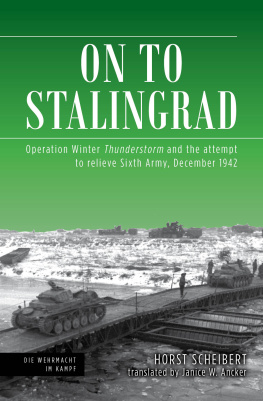
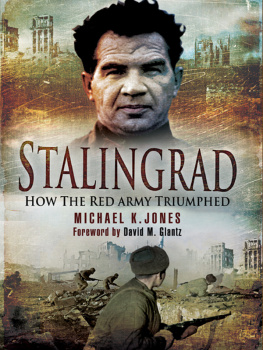

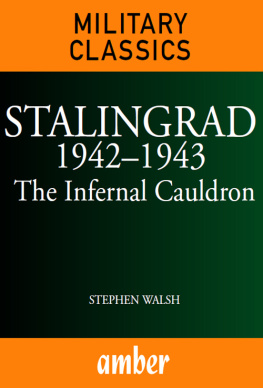
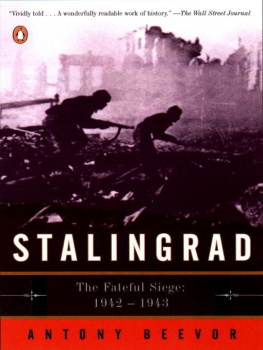
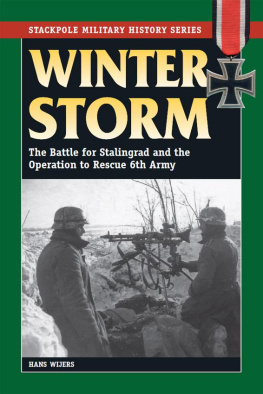
 The paper used in this publication meets the minimum requirements of American National Standard for Information SciencesPermanence of Paper for Printed Library Materials, ANSI/NISO Z39.48-1992.
The paper used in this publication meets the minimum requirements of American National Standard for Information SciencesPermanence of Paper for Printed Library Materials, ANSI/NISO Z39.48-1992.